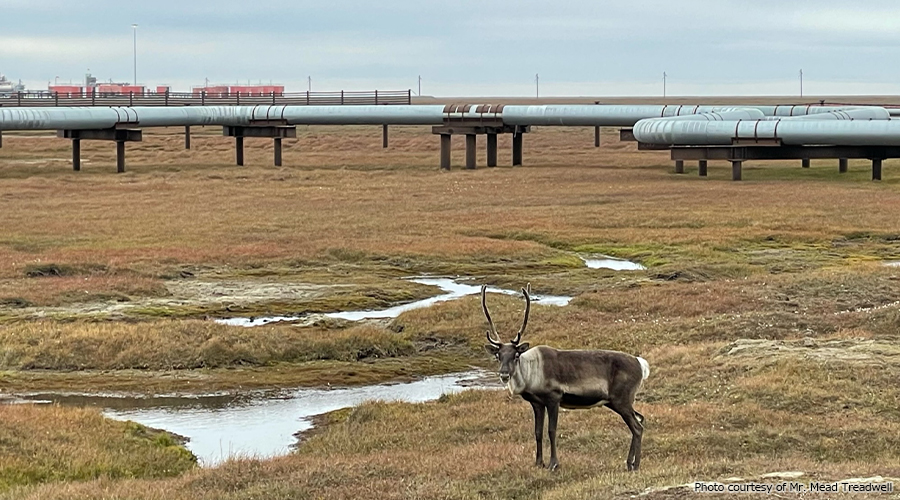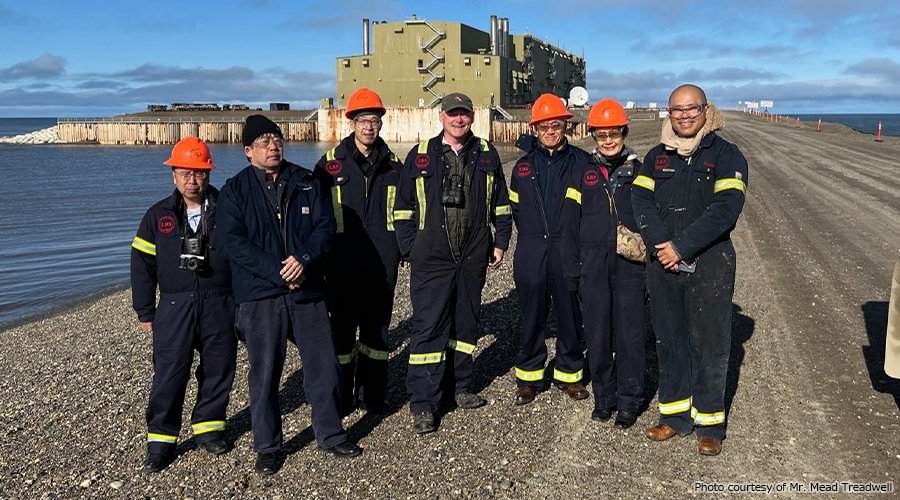Research report on oil and gas development in Alaska
Writer: Shinichiro Tabata (Hokkaido University)
Related Research Program: Human Society
Five members of the economics team in the research program “Human Society” conducted research on oil and gas development and its impact on the local economy and society in Anchorage and North Slope, Alaska from August 28 to September 6, 2023.
In Alaska, crude oil has been extracted in Prudhoe Bay (North Slope Borough) on the coast of the Arctic Ocean (Beaufort Sea) since the 1970s, and it has been exported from ports in the south via a pipeline that crosses Alaska. Furthermore, there are currently discussions about projects to export natural gas produced on the North Slope either by pipeline, like crude oil, or by tanker from the Arctic Ocean, like Russia’s Yamal LNG. In both proposals, Asia is envisioned as the destination for exports, and as international oil and gas trading relationships will undergo major changes starting in 2022, there is a sense of great expectations for Japan.

In Alaska, under the Alaska Native Land Claims Settlement Act (ANCSA) of 1971, Native American rights to land were waived, and regional corporations were established in each region and village corporations were created in each indigenous village. Through these corporations, indigenous peoples were able to enjoy rights and benefits over land and underground resources. All regional companies and many village companies are commercial entities, and oil companies operate under contracts with these companies.
The state of Alaska is vast, with an area approximately 4.6 times the size of Japan, and its North Slope Borough alone is slightly larger than Honshu of Japan. The borough also includes the federally owned National Petroleum Reserve in Alaska (NPRA) and the Arctic National Wildlife Refuge (ANWR), which has been established for nature conservation. Arctic Slope Regional Corporation (ASRC), one of the regional companies, owns part of the area between these two areas and is proceeding with development. At NPRA, during our visit, news broke that the Biden administration would cancel oil and gas drilling leases that had been approved under the Trump administration. The debate surrounding resource development and nature preservation still continues. However, due to the above-mentioned system of incorporating indigenous peoples into commercial organizations, we learned by this visit that indigenous peoples are less likely to oppose resource development advocating for nature conservation, as is often the case in other Arctic regions.
We first attended the Alaska Oil and Gas Association’s annual meeting held over two days in Anchorage. The general meeting, held at the city’s largest convention center, was attended by approximately 300 people, including oil and gas industry officials and state government officials. We were able to efficiently collect information on the current status of oil and gas development in Alaska. In Anchorage, we were able to speak with experts in industries such as fishing, in addition to oil and gas, as well as executives from the Alaska Federation of Natives.
The visit to the North Slope was arranged by Qilak LNG CEO Mead Treadwell, who himself led the visit. Over the course of two days, we visited several mining areas, including facilities where crude oil drilling is being carried out, and a methane hydrate development and testing site where the Japan Organization for Metals and Energy Security (JOGMEC) is also participating. We were able to enter and inspect places that we would normally not be able to access. I was struck by the sight of these production facilities in the vast Arctic nature that stretches as far as the eye can see.

Through this field survey, I was able to clearly understand the following three characteristics of Alaska compared to places such as the Russian Arctic.
First, Alaska has vast mineral resources, including oil, gas, coal, and rare metals, and the potential for development is extremely high. I have the impression that development is being carried out very carefully, taking into consideration nature conservation, etc., and this may mean that so-called overexploitation has been prevented, and that there are still many resources left. Not only are the natural conditions harsh, but development regulations for nature conservation are also strict, which may mean that development is not undertaken unless it is expected to be profitable. The biggest challenge for any resource is how to transport it.
Second, there is almost no conflict with indigenous peoples regarding resource development. The above-mentioned mechanism for incorporating Native Americans into commercial organizations, also known as the Alaska corporate model, has contributed to this. Compared to countries such as Russia, indigenous people in Alaska seem to be enjoying far more benefits from development in various aspects such as employment and income.
Third, due to their geographical proximity, it has become clear that Alaska faces Japan and Russia. There seems to be a strong awareness of trends in Russia as a supplier country and Japan as a demand country, not only in oil and gas, but also in fisheries and forestry. In other words, I realized that Japan has strong ties not only with Russia, which is located in the Arctic Circle, but also with Alaska as a source of resources.
Last but not least, I would like to express my gratitude to the staff of the Consular Office of Japan in Anchorage, including Head of Office Masaru Aniya, and Mr. Mead Treadwell for their great assistance during this field survey.
